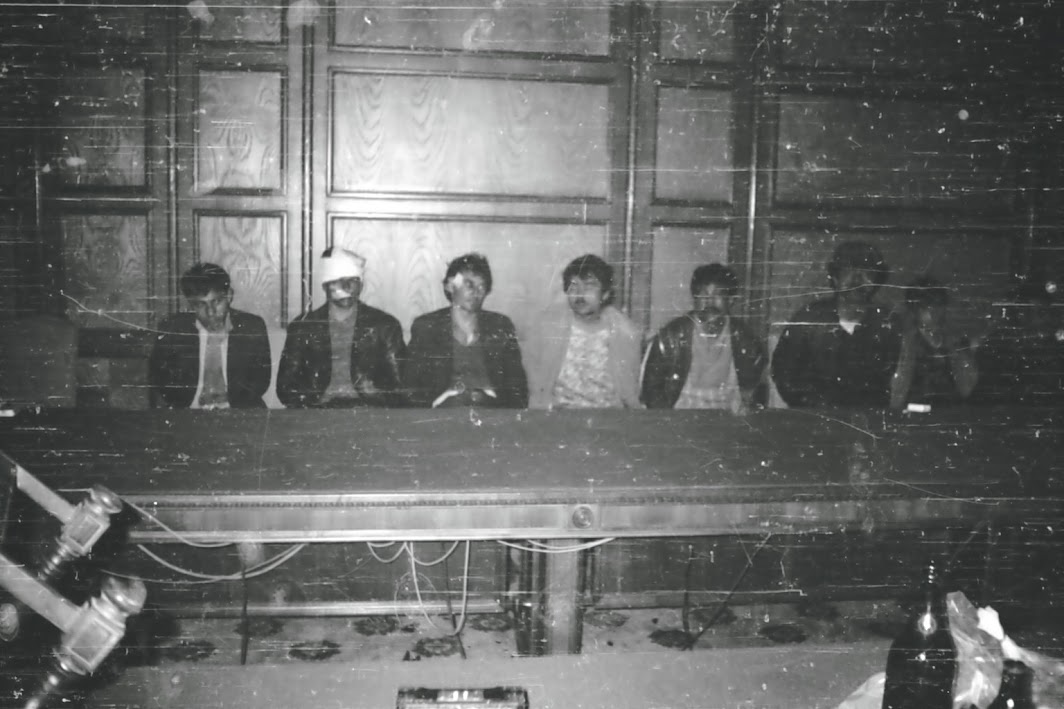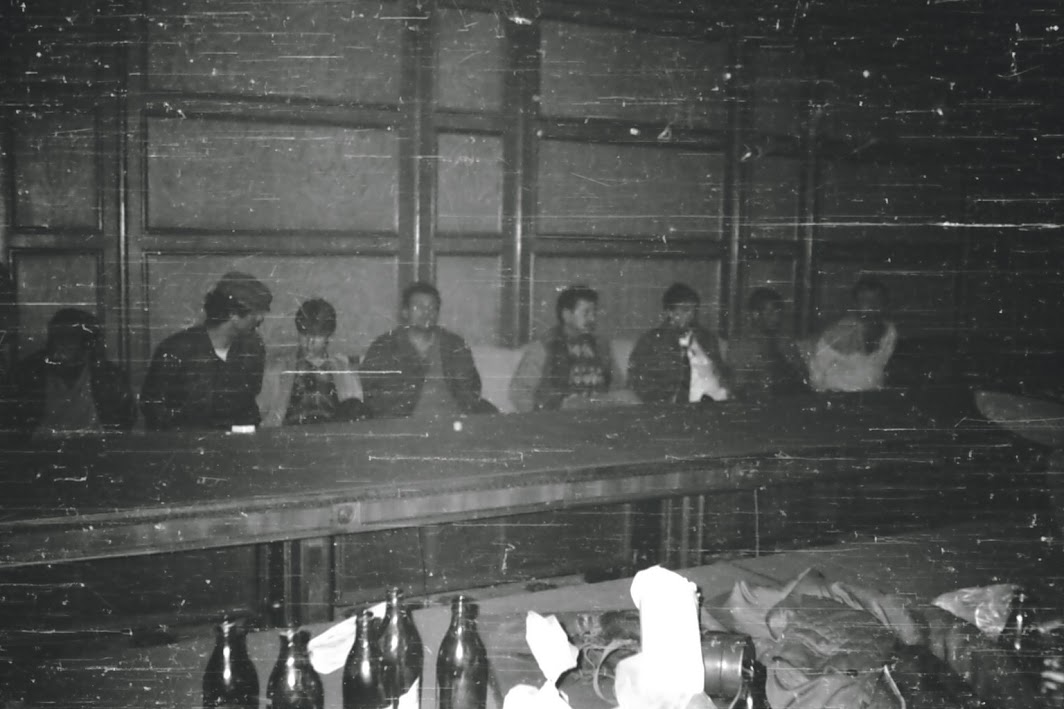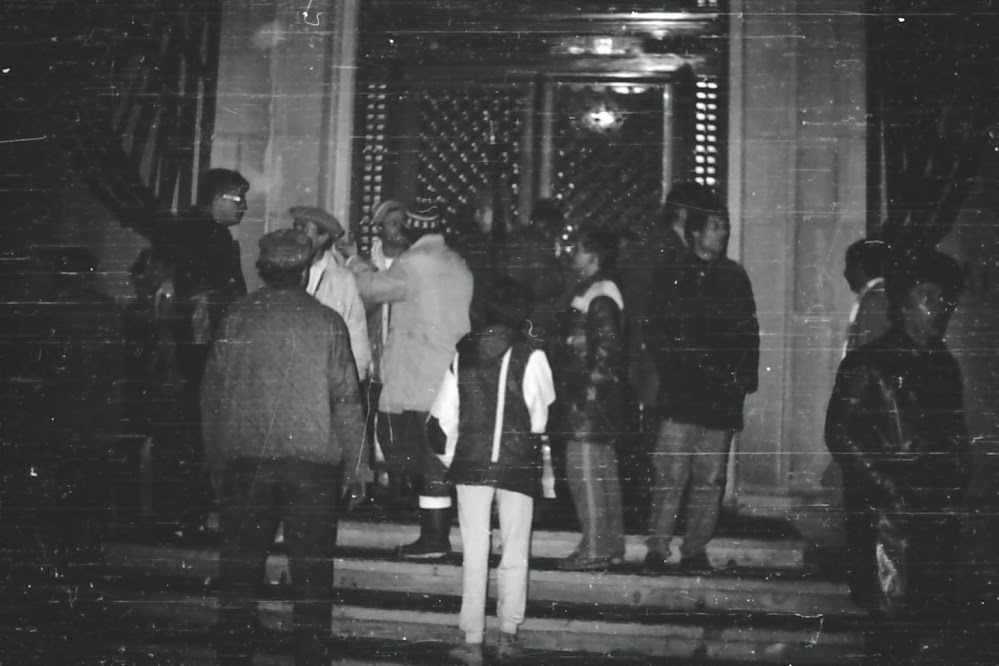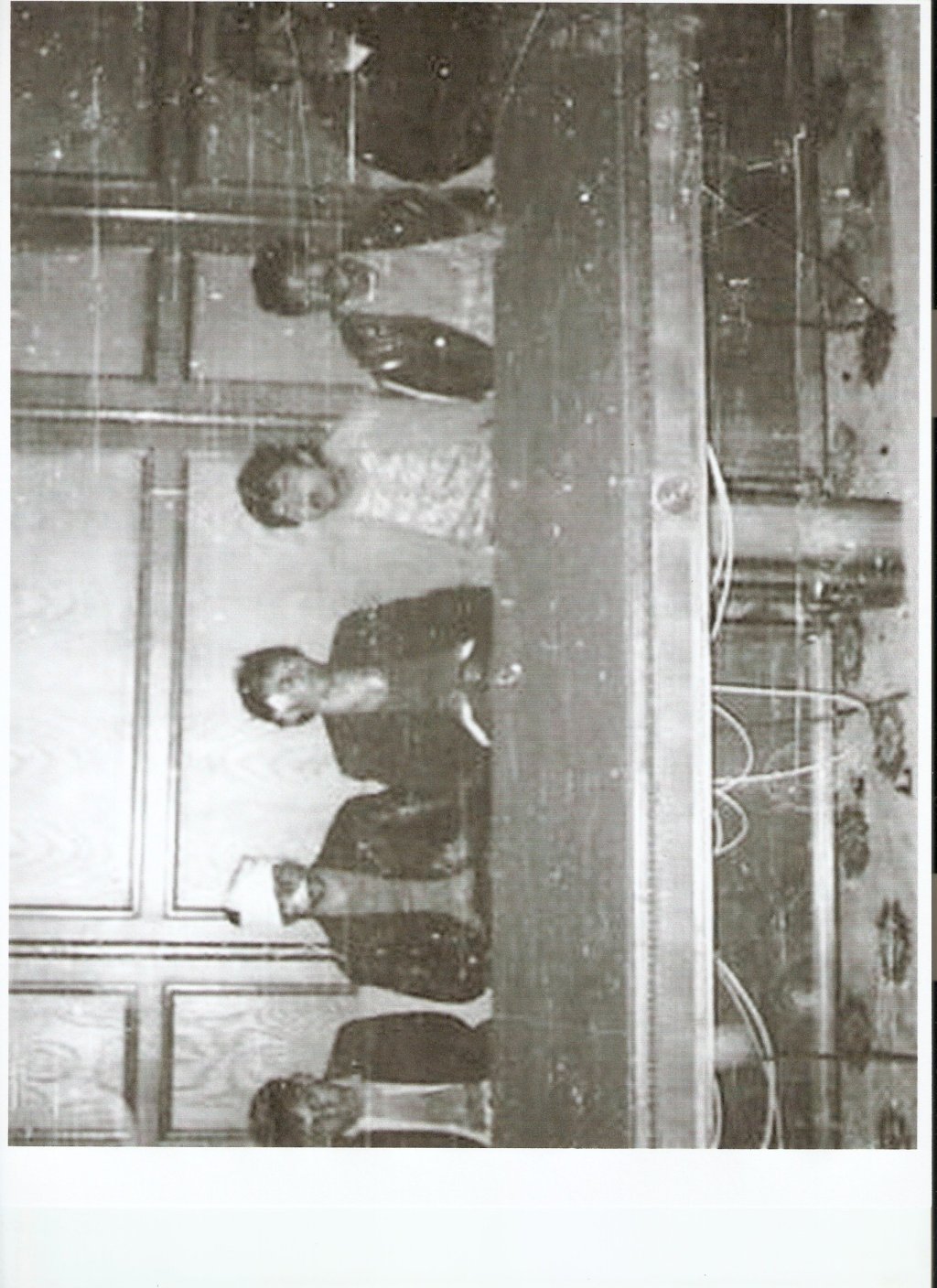In Response to an Inquiry by Professor Charles King of Georgetown University

(this represents a purely and strictly personal point of view; to suggest otherwise is to misrepresent me)
In the above video, Professor Charles King–one time Ion Ratiu Chair of Romanian Studies at Georgetown University–asks Professor Dennis Deletant–current Visiting Ion Ratiu Chair–at about minutes 43:40-46:15 to discuss the “status of the debate” on “who was shooting?” (i.e. the “terrorist” debate) and mentions as a “conspiracy theory” the idea of “special troops of Palestinian snipers trained by Ceausescu”?
King does not explain why he considers this a “conspiracy theory.” Since he does not explain himself we can only speculate: perhaps it is because it is a view held by so few people who study December 1989? Perhaps it is because it is rarely mentioned seriously today? Or perhaps it is because it plays into what is a sort of western intellectual catnip: Arab students who studied in Romania during the Ceausescu era were widely resented, partly out of xenophobia and racism, partly out of a perception that they were privileged and playing ball with the Ceausescu regime by coming there at all. Thus, it is suggested, in the fear and confusion of December 1989, the reflexes of “othering” and the inability to accept that one’s fellow countrymen, rather than foreigners, are killing their mothers and fathers, brothers and sisters, sons and daughters, kicked in and Arabs and Iranians became the constructed victims of suspicion and hatred (this somewhat post-modernist account creeps into the work of Ruxandra Cesereanu and even Peter Siani-Davies). Ironically, Deletant’s very answer–invoking the claims of eyewitnesses from the time–demonstrates that what King terms a “conspiracy theory” is far from that alone.
[Additional photos from the series of which the above photo is taken can be found at the end of this article]
Professor King may indeed wish an answer to his above inquiry, but he has demonstrated time and again that he is not truly interested in the content of the answer to this inquiry–independent of the context of who gives the answer. Professor King artfully plays the academic games of inclusion and exclusion within the Romanianist community. (And, yes, Professor King, when you cannot mention or address the research of someone who has investigated December 1989 for two decades as an academic researcher and scholar, and as a CIA analyst, it cannot help but come across as bloody-minded, cheap, and ultimately, weak) What is truly interesting, however, is how Professor King’s evaluation of research on communist and post-communist Romania has “evolved” over time.
Let us look at a classic example. (I initially stumbled upon this in late 1999/early 2000 at the library at Lafayette College in Easton, PA where I was attempting to teach at the time, but only recently stumbled upon it again.) This is from International Affairs (Royal Institute of International Affairs), vol. 69, no. 3 (July 1993), p. 605.
…The contrast between the American and Romanian contributions to the volume is its most interesting element. While the Romanians present rather straightforward accounts of developments through to mid-1991, the Americans spend most of the time railing against president Ion Iliescu and the then Prime Minister, Petre Roman. The tone of the American articles is symptomatic of the West’s infatuation with the “democratic opposition” in Romania, particularly after the appalling use of force by the Iliescu government against demonstrators in June 1990.
The book reflects the tendency of Western scholars–especially Romanian-American emigres–to project their own hopes and political agendas on a constructed Romanian ‘opposition’, a rag-tag collection of parties which have themselves been too inexperienced and politically inept to approximate the social democratic ideal envisaged by the West. It never seems to occur to the book’s contributors that the Romanian people have failed to support the ‘democratic opposition’ against Iliescu in two national elections precisely because the opposition has failed to articulate an appealing and effective political programme. One wonders how long facile arguments about the supposedly authoritarian, anti-Semitic, ethno-chauvinistic ‘political culture’ of the Romanians will pass for considered analysis. It is disturbing enough to see such arguments in the popular press, but it is particularly disheartening in a book by America’s leading Romanianists.
Although Oxford graduate student Charles King mentions Larry L. Watts favorably, by name, he does not mention “America’s leading Romanianists,” other than to draw special attention to “Romanian-American emigres.” A look at the Table of Contents of this book makes clear exactly who is the target of his displeasure: Matei Calinescu (Indiana University) and Vladimir Tismaneanu (University of Maryland, College Park). (Their chapter originally appeared in Problems of Communism, a copy of which can be found online here http://www.unz.org/Pub/ProblemsCommunism-1991jan-00042
Introduction / Harry Barnes, Jr. 1
Pt. 1. Domestic Issues: The Difficult Path to Democracy 9
1. The 1989 Revolution and Romania’s Future / Matei Calinescu, Vladimir Tismaneanu 11
2. The New Leaders and the Opposition / Mary Ellen Fischer 45
3. Peasants and Authority in the New Romania / David A. Kideckel 67
4. Romanians and Democratic Values: Socialization After Communism / Trond Gilberg 83
5. The Romanian Army in the December Revolution and Beyond / Larry L. Watts 95
6. Social Change and Changing Public Opinion in Romania After the 1990 Election / Petre Datculescu 127
7. The Prognoses for Economic Recovery / Mugur Isarescu 149
Pt. 2. Foreign and Defense Policies: Finding Security in the New Europe 167
8. Post-Communist Insecurity and the Romanian Case / Daniel N. Nelson 169
9. Security as Seen from Bucharest / Walter M. Bacon, Jr. 187
10. After the Revolution: A Foreign Policy of Bounded Change / Ronald H. Linden 203
11. Romania and Moldavian Political Dynamics / William Crowther 239
12. An Alternative Romanian Foreign Policy / Sorin Mircea Botez 261
13. Romania’s Response to a Restructured World / Ioan Mircea Pascu 271
Conclusion / Daniel N. Nelson 285
About the Editor and Contributors 293
Index 297
http://www.lib.muohio.edu/multifacet/record/mu3ugb1739645
By contrast, let us see how Professor Charles King of Georgetown University reviewed the CPADCR Raport Final anchored by the very same emigre Professor Vladimir Tismaneanu of University of Maryland, College Park. (Whereas King had a few muted criticisms of the coverage of the communist era in the Final Report, he mentions without comment in an affirmative fashion the Tismaneanu Commission Report’s coverage of the very same period and events he described back in 1993 above.) This is from Slavic Review, vol. 66, no. 4 (Winter 2007), pp. 718-723. “Remembering Romanian Communism: Comisia Prezidentiala pentru Analiza Dictaturii Comuniste din Romania. Raport Final.”
Fourth, the commission argues for interpreting December 1989 as an anticommunist revolution, not as a coup staged by disgruntled communist elites. The victims of the initial violence in Timisoara, followed by street demonstrations and fighting between demonstrators, the secret police, and army units in Bucharest and other cities, desired a genuine change of regime, not an overthrow of the Ceausescu clan and its replacement by second-tier party officials. The report thus repeats the common view (at least among western academics) of the revolution as having been hijacked, early on, by a small coterie interested in preserving their privileges in a new political era.
Finally, the report sees most of the 1990s as a continuation of the old order, in large part due to former president Ion Iliescu and his immediate associates, who seized power as the National Salvation Front after Ceausescu’s fall. Otherwise, the commission asks, how can one really make sense of a reality in which former members of the secret police became major businessmen; Ceausescu’s hagiographers became popular authors, publishers, and politicians; and senior political figures who survived the revolution systematically blocked attempts at lustration or other techniques for bringing individuals to justice? In the commission’s view, current politicians who were active in the communist era–including, for example, the honorary president of the largest party in parliament (Iliescu) and the vice president and secretary of the parliament’s upper house (Tudor and Mihai Ungheanu)–should properly be seen as part of Ceausescu’s legacy, not as closet dissidents who waited patiently for the chance to un-burden the country of a mad despot.
Would it somehow be unfair, too much, to suggest that Charles King’s interpretation and evaluation of these events and of the views of America’s leading Romanianists–especially Romanian American emigres–had changed drastically between the time Charles King was a graduate student in Oxford, England and a Professor at Georgetown University???
(To be continued…)
—




fotografiile lui “Ion Laurentiu,” CC-ul PCR-ului, in noaptea de 23-24 decembrie 1989.
https://plus.google.com/photos/109794872578116972195/albums/5417438035204009089




Rebeca Doina Cercel (revolutionar, CC PCR, decembrie 1989): “Erau intr-adevar dosare pe care era scris ‘strict secret’ si in care am vazut ca erau mentionate bazele de antrenament ‘antiterorist’ ale libienilor de la noi din t said
[…] In Response to an Inquiry by Professor Charles King of Georgetown University […]
25 for the 25th Anniversary of the Romanian Revolution: #16 Eyewitness Accounts from inside the Central Committee (CC-ul) Building « The Archive of the Romanian Revolution of December 1989 said
[…] In Response to an Inquiry by Professor Charles King of Georgetown University […]